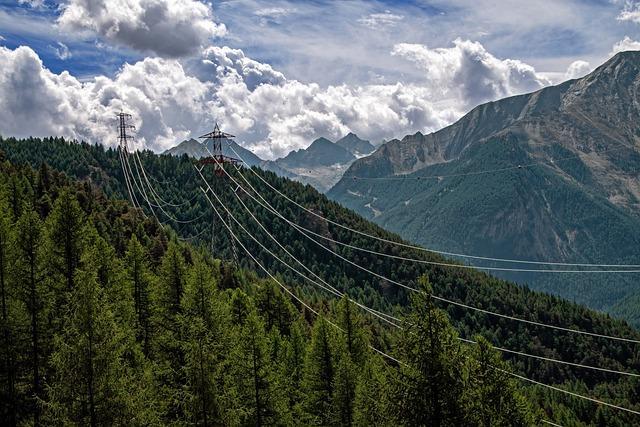Tree Planting Ceremonies and Rituals hold a significant place in various cultures and societies around the world. From honoring a child’s life by planting a tree in their name [1] to the ritual practices that contribute to maintaining plant diversity and forest ecosystems [2], these ceremonies symbolize a deep connection between humanity and nature. Events like Arbor Day serve as a reminder of the importance of trees and inspire communities to come together in the spirit of conservation and growth [3]. This article explores the rich tapestry of traditions and beliefs surrounding Tree Planting Ceremonies and Rituals, shedding light on their cultural significance and impact on the environment.
Table of Contents
- The Significance of Tree Planting Ceremonies in Various Cultures
- Traditional Rituals Associated with Tree Planting Ceremonies
- Modern Approaches to Tree Planting Ceremonies
- Guidelines for Hosting a Successful Tree Planting Ceremony
- Q&A
- Conclusion
The Significance of Tree Planting Ceremonies in Various Cultures
In various cultures around the world, tree planting ceremonies hold significant importance, symbolizing unity, growth, and sustainability. These rituals are deeply embedded in traditions and customs, reflecting the connection between humans and nature. The act of planting a tree together signifies the merging of two lives or families, creating a lasting bond that mirrors the strength and resilience of the tree itself[2].
Moreover, tree planting ceremonies serve as a powerful reminder of the need to protect and preserve the environment. By coming together to plant trees, communities demonstrate their commitment to environmental conservation and sustainable practices. These ceremonies not only beautify the surroundings but also contribute to restoring and rejuvenating degraded land, promoting biodiversity, and combating the effects of climate change[1].
Furthermore, tree festivals are community events that celebrate the significance of trees in various cultures. These festivals bring people from diverse backgrounds together to honor the invaluable role of trees in our lives and the environment. Through tree planting ceremonies and festivals, communities unite in a shared mission to promote eco-consciousness, foster a sense of community, and ensure a greener, more sustainable future for generations to come[3].
Traditional Rituals Associated with Tree Planting Ceremonies
Tree planting ceremonies hold significant meaning in various traditions and cultures, symbolizing growth, renewal, and interconnectedness with nature. These rituals often foster a sense of unity and gratitude toward the Earth, emphasizing the importance of sustainability and environmental stewardship.
One traditional ritual associated with tree planting ceremonies is the Druid/OBOD style, where participants begin by digging holes for the trees before commencing the rest of the ritual [1]. This meticulous preparation reflects a deep reverence for the land and the act of planting itself. Symbolically, the act of planting a tree represents a spiritual connection to the Earth, as the tree grows, so does the bond between the planter and nature.
Another poignant example is the tree planting ceremony in celebrant-led Yorkshire wedding ceremonies, which symbolizes the growth of love through the deepening of roots and the promise of a long and healthy marriage [2]. This ritual not only celebrates the union of two individuals but also highlights the importance of nurturing relationships and creating a foundation that can withstand the test of time, much like the roots of a tree firmly planted in the ground.
Modern Approaches to Tree Planting Ceremonies
have evolved to encompass a blend of tradition and innovation, creating meaningful rituals that honor nature, loved ones, and special occasions. These ceremonies symbolize more than just the act of planting a tree; they represent a deep connection to the Earth and a commitment to sustainability.
One modern approach includes incorporating eco-friendly practices into the ceremony, such as using biodegradable materials for decorations, providing information on tree care and environmental conservation, and selecting native tree species to promote biodiversity. Additionally, personalized rituals like writing wishes or intentions on biodegradable tags attached to the tree can add a unique and heartfelt touch to the planting process.
Furthermore, tree planting ceremonies can serve as opportunities for community engagement and social impact. Organizations and groups often organize group plantings or tree-planting events to raise awareness about environmental issues, foster a sense of unity, and contribute to greener spaces in urban areas. These ceremonies not only celebrate the act of planting trees but also inspire individuals to take action in preserving the environment for future generations.
Guidelines for Hosting a Successful Tree Planting Ceremony
When organizing a tree planting ceremony, it is essential to follow certain guidelines to ensure its success and significance. These ceremonies are not only about planting trees but also about fostering a sense of community and environmental stewardship.
****:
- Choose a meaningful location for the ceremony, such as a park, community garden, or schoolyard
- Invite local community members, schools, and organizations to participate in the event
- Prepare the site by clearing the area of debris and creating labeled spots for each tree
- Provide participants with tools and instructions on how to plant the trees properly
- Include rituals or traditions that hold significance for the community, such as a moment of silence or a group blessing
Additionally, creating a sense of unity and purpose among participants can enhance the overall experience and impact of the ceremony. Remember, a successful tree planting ceremony goes beyond just planting trees; it is about coming together to make a positive difference in the environment.
Q&A
Q: What is the significance of tree planting ceremonies and rituals?
A: Tree planting ceremonies and rituals hold significant symbolism in various cultures and traditions. They are seen as a way to commemorate important life events, such as births, weddings, or memorials, by planting a tree in honor of the occasion. The act of planting a tree symbolizes growth, renewal, and connection to the earth.
Q: How can tree planting ceremonies and rituals be incorporated into personal or community events?
A: Tree planting ceremonies and rituals can be incorporated into personal or community events by selecting a meaningful location, choosing a tree species that holds significance, and inviting participants to take part in the planting process. This can create a sense of unity, purpose, and environmental consciousness among those involved.
Q: Are there any specific guidelines or traditions to follow when conducting a tree planting ceremony?
A: While tree planting ceremonies and rituals can vary depending on cultural beliefs and practices, some common guidelines include blessing the tree before planting, inviting participants to share intentions or wishes, and offering gratitude to nature. It is essential to conduct the ceremony with respect for the environment and the tree being planted.
Q: How does tree planting contribute to environmental conservation and sustainability?
A: Tree planting plays a crucial role in environmental conservation and sustainability by helping to restore deforested areas, combat climate change through carbon sequestration, and provide habitats for wildlife. It also promotes awareness of the importance of trees in maintaining ecological balance and preserving natural resources.
Q: Can tree planting ceremonies and rituals be adapted for different age groups or special populations?
A: Tree planting ceremonies and rituals can be adapted for different age groups and special populations by incorporating elements that resonate with their backgrounds or interests. For example, involving children in the planting process can be educational and engaging, while customizing ceremonies for special populations can create an inclusive and meaningful experience for all participants.
References:
1. [3]
Conclusion
In conclusion, tree planting ceremonies and rituals hold significant meaning and offer a beautiful way to honor and commemorate loved ones. Whether it’s through the tradition of planting a tree in memory or utilizing the eco-friendly gesture of perpetuating a soul through a tree, these rituals can serve as a touching tribute for future generations [1]. The act of planting a tree can provide a sense of comfort and connection, making it a sacred ritual for many individuals, even in the absence of religious beliefs [3]. It is a powerful way to pay homage to the memory of a loved one and create a lasting legacy that continues to grow and thrive over time [2].
Simpsons Tree Services, Servicing Melbourne’s North Eastern Suburbs
Book a quote online at www.simpsonstrees.com.au




